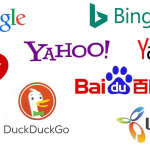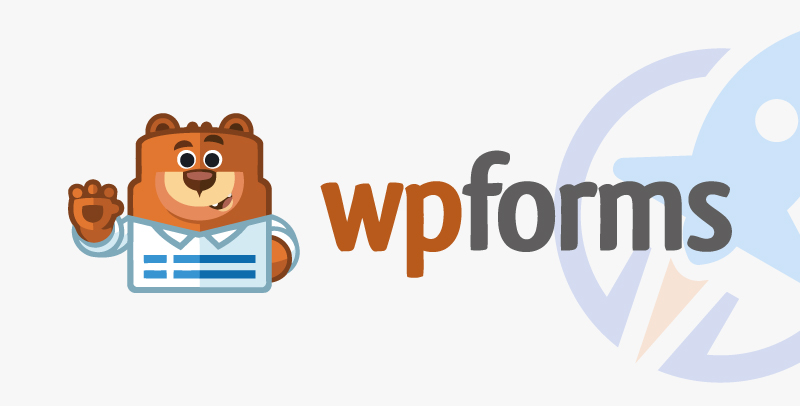Being seen and heard on the web is getting harder every day.
There are nearly 2 billion websites in existence…
But a mere fraction of them receive any traffic (only about 400 million – 15-20% – are even active).
Thousands of new websites are created daily. About 4 million new blog posts are published every 24 hours.
The problem?
Barely anyone will read them. The lion’s share of the traffic, clicks, and visits (and thus, the attention) will go to top contenders.
These are the people, brands, businesses, and organizations that are making their voices rise above the heap.
In the vast wasteland of the internet, these people have nailed their content differentiation factor and lean into it.
They know how to make people sit up and listen (and/or click their links, read their content, and buy into whatever they may be selling).
In a landscape of utter content saturation, where every topic under the sun, moon, and stars has been exhausted 20 times over…
This is a big deal.
Being unique enough to stand out online is everything.
At the same time, it’s ridiculously hard.
Let’s explore why standing out from the crowd is one of the most difficult parts of content marketing. Then, we’ll look at a few amazing brands killing it with their uniqueness and content differentiation factor.
Finally, we’ll dive into some tips on how to discover your own uniqueness online.
Go time. ?➡
Have You Discovered Your Unique Content Differentiation Factor? Why It’s Harder than Ever for Brands to Be “Unique”
2 More Reasons Why It’s Hard to Stand Out Online (And Why You Need a CDF)
- Content Shock Is Real
- Consumers Are Inundated with Information
3 Brands Killing It with Their Content Differentiation Factor
- Backlinko (Brian Dean)
- Spotify
- Tasty
My Best Tips to Dig Deep and Find Your Content Differentiation Factor
- Step Away from Work and Go Internal
- Step Away from Work and Have More Conversations
Your Content Differentiation Factor Is Key

2 More Reasons Why It’s Hard to Stand Out Online (And Why You Need a Content Differentiation Factor)
Back in 2018, I came up with a concept called the Content Differentiation Factor.
Basically, this concept comes down to asking yourself (or your client, your boss — whoever you’re managing the brand for) this question:
“What separates our content from the rest of the content out there? What makes my brand different from all the others out there like me?”
You have to have something truly different to stand out from the crowd (more on this and examples below). And you must spend time on this to figure it out before going full-force into content creation. (It’s worth it).

A content differentiation factor is a key to standing out.
But, first, you should know what you’re working against.
1. Content Shock Is Real
Mark Schaefer’s classic, groundbreaking article on content shock explains why and how content marketing will reach a breaking point.

As he explains, we have free content coming out of our ears on the internet. You can read blogs and articles on every topic that’s ever been studied, thought about, or questioned.
The problem lies in supply/demand. There is more content in existence than any person can legitimately read in a lifetime – let alone their free time. So, to break away from the information overload and stand out, content marketers are paying to get their content seen.
Of course, that’s not sustainable at all.
Only those who separate themselves uniquely from the information mountain – who provide unique value to their audience – will continue to see ROI from content. (It will not be whoever pays the most money for Google Ads.)
2. Consumers Are Inundated with Information
As we mentioned, content is exploding. Anybody can make a free blog and publish whatever they want. Businesses are blogging because they know the ROI could be amazing – but unfortunately, that leaves us with MILLIONS of blogs that are mediocre at best.
Think about the sheer number of new blog articles that appear on your feeds daily, and how many you have to skip over vs. read. Think of all the news articles, videos, tweets, social media posts, emails, ads, and search results that flow in front of you without stopping.
You have to make micro-decisions all day, every day, as long as you have the internet or a smartphone. You have to sift through the mountain and decide what’s worth your time and what isn’t.
2.5 quintillion bytes of data are created daily. Yes, daily. And, according to Domo’s Data Never Sleeps 7.0 infographic, by 2020, 40x more data bytes will exist than there are stars in the observable universe.

With so much information and content flying thick and fast on the web, we only have the bandwidth to pay attention to a limited amount.
Who and what gets our attention? The brands, people, and content that manage to rise above the rest because they differentiated their content and message successfully.
3 Brands Killing It with Their Content Differentiation Factor
These three names have found their content differentiation factor and lean into it – with amazing results.
1. Backlinko (Brian Dean)
Want to see a perfect example of simplicity as a differentiator? Look to Backlinko, Brian Dean’s brand and blog.
When he says his advice is zero-fluff and practical, he’s not kidding.
His introductions to his blog posts are a great example. He doesn’t try to convince you how clever he is or wind you up with a story. He doesn’t hook you with examples other than ones from his own experience and tested results.
He tells you what to expect and what you’ll get out of reading the post. That’s it.

Simple. Straightforward. To-the-point. No fluff. Understandable. That’s Brian Dean’s style in a nutshell, and it has differentiated him from other SEO experts in a big way.
He explains SEO concepts so clearly that you don’t feel like learning. But you are.

Also, note Brian’s use of the one-sentence paragraph. Almost every paragraph in all of his blogs follows this format. Screenshots and images are sprinkled in copiously.
Not to mention, his sentences are short and simple. No run-ons or confusing constructions, here.
It’s all geared toward helping the reader learn and understand in the easiest way possible.

No one else has this type of identifiable style. It’s a content differentiation factor, and just one of the reasons Backlinko consistently stands out among all the other SEO blogs out there.
2. Spotify
Spotify could be just another streaming music service – but it’s not.
In recent years, their content differentiation factor comes from how they provide personalized content to their users. Enter Spotify Wrapped.

This end-of-year event brings you a custom playlist based on your listening habits from the past 11 months. The songs you played the most are all featured in one handy list.
Spotify has taken it even further, providing you with a personalized “story” showing your music stats, including how many minutes you streamed music this year and a rundown of your most-listened-to artists. You can view the whole thing on both desktop and mobile, too, and share any of it with social media.


Plus, in 2019 Spotify users were treated to their “decade wrapped,” which showed you your top artists and songs from the last 10 years (if you were a member that long).
Spotify could present these listening stats to users in some way within the app, year-round – I’m reminded of the “top 25” playlist that was continually updated in iTunes (R.I.P.) – but would it feel as special and fun that way? I would argue not.
Instead, the streaming service has taken something that might have been just another feature and turned it into personalized content people actually look forward to at year’s end. In fact, Spotify Wrapped was so popular this year, it went viral. Seemingly everybody across social media was sharing their music stats. (Meanwhile, users of other streaming services got jealous.)
3. Tasty
There are thousands upon thousands of cooking and baking blogs on the internet. However, one that really stands out is Tasty.
Tasty, as you might know, is a brand that popularized the overhead-camera-step-by-step-process video with no talking or narration. You just watch a pair of hands make the recipe, and text tips show up on screen to help clarify things. ?
ALL of the videos are mobile-optimized and short. They’re the perfect type of snackable content you can watch for a few minutes of downtime during your day.
Sweet Potato Mushroom Penne
Shop this recipe in our Tasty iOS app:https://t.co/klDQKHQosv pic.twitter.com/SyNmzC8Smu— Tasty (@tasty) February 3, 2020
The content is mainly visual, and the style is fun and unique. There are hundreds of videos with hundreds of recipes in their repertoire, all of which are of equal quality. They range in content from easy hacks to more in-depth tutorials (like how to make a snow globe cupcake).
It’s no wonder Tasty has over 97 million likes and over 100 million followers on Facebook.
Their success has been so huge, they branched out into cookbooks, cookware, toys, merch, and even activity kits, like this Royal Icing 101 kit. Their videos have expanded under the moniker “Tasty Presents,” where they have new shows like Eating Your Feed; I Draw, You Cook; and Making It Big.
What sets Tasty apart is its video-forward approach, fun style, and interesting recipes. They have a unique angle on “food blog” that no one else has cornered.
My Best Tips to Dig Deep and Find Your Content Differentiation Factor
So, you know the importance of uniqueness online and how others have gone after it. But what about you? How do you find YOUR unique content differentiation factor?
My two best tips start with stepping away from work.
1. Step Away from Work and Go Internal
If you’re constantly in work mode, your brain won’t get a chance to recharge and light up with new ideas. Shake away the cobwebs by stepping away from your desk and start doing some meditation, journaling, deep thinking, prayer – whatever works for you.
Even just sitting still in a chair and allowing yourself to daydream and – *gasp* – do nothing are great ways to create some brain sparks.
Going internal has the power to produce epic thoughts that are mega lightbulb moments. For example, look at personal development trainer Brendon Buchard. Right after he wakes up in the morning, he meditates, journals, and then writes.
What comes from that process? Highly shared, impactful content.
Finding your unique content differentiation factor requires some deep thinking. How do you do this? Start by doing nothing (seriously!)? — get away from work mode and allow yourself to recharge and get those new ideas coming. ??
Click To Tweet
2. Step Away from Work and Have More Conversations
Recharging is everything to the creative process. No one can keep going, going, going 24/7 on a single trajectory. We all need time to stop, relax, and expose ourselves to different experiences and viewpoints.
When most of your work is digital, stepping away from the computer to have real-life conversations and interactions is invigorating. This might include:
- Going to lunch or coffee with a colleague or coworker
- Attending conferences and meeting people in your industry
- Speaking at conferences and having Q&A sessions
- Going to a local meet-up or industry event
And, if you can’t step away from the computer right now, engage with different people on social media. You never know where a friendly comment or chat may take you.
Someone leading by example in this respect is Michael Brenner, the author of The Content Formula and Mean People Suck. He’s been a keynote speaker for four years, including at CMWorld, where I met him. He’s likable, but he also takes the time to talk to people and start conversations!

Bottom line: Be open to the possibility of conversations and what they might hold. A creative spark can come from the flint and tinder of someone else’s perspective, ideas, or stories.
Your Content Differentiation Factor Is Key
Without a content differentiation factor, you will blend in and fade away. This is a sad, sorry fate for anyone, brand or person, that longs to leave their footprint on society.
Before you make your mark, you first have to know what makes you YOU. It may take some dedicated internal time and a lot of searching conversations, but little by little, you’ll discover why you’re not like the rest of the internet.
Once you find your uniqueness, hold onto it, lean into it, and celebrate it. The world has enough same-y brands and personalities to contend with. Be the breath of fresh air everyone is looking for.
The post Have You Discovered Your Unique Content Differentiation Factor? Why It’s Harder than Ever for Brands to Be “Unique” appeared first on Express Writers.














